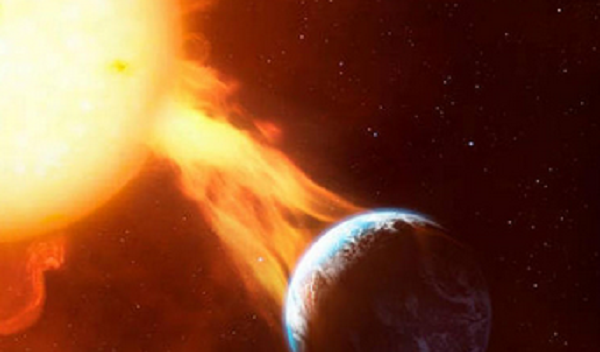‘Tangled mess of magnetic fields’: NASA warns of potential blackouts across Earth due to solar flares erupting on the sun
NASA is warning of solar storms and solar flares erupting on the surface of the sun, which can impact radio communications, electric power grids, navigation signals and pose risks to spacecrafts and astronauts in the orbit.
A strong solar flare, peaking at 4:25 a.m. EDT on May 14 was recorded by NASA’s Solar Dynamics Observatory.
This flare was classified as an X2.7 flare – the highest category for a solar flare.
The sun’s most active region is currently moving to face the Earth, which can lead to forecasts of significant space weather.
What are ‘solar storms’?
A solar storm is a sudden explosion of particles, energy, magnetic fields and material blasted into the solar system by the sun, NASA explains.
A solar storm is caused due to a “tangled mess of magnetic fields” created by the sun. According to NASA, these magnetic fields get twisted up as the sun rotates – with its equator rotating faster than its poles.
“Solar storms typically begin when these twisted magnetic fields on the sun get contorted and stretched so much that they snap and reconnect (in a process called magnetic reconnection), releasing large amounts of energy,” the space agency said.
A solar storm can create major disturbances in the Earth’s magnetic field, called a geomagnetic storm, the space agency’s website reads. This storm can cause radio blackouts, power outages and beautiful auroras brought on by coronal mass ejections (CME), which occurs when charged solar particles pass through the Earth’s atmosphere.
What are ‘solar flares’?
A solar flare is an intense burst of radiation or light on the sun, according to the space agency.
“These flashes span the electromagnetic spectrum – including X-rays, gamma rays, radio waves and ultraviolet and visible light,” NASA said.
Solar flares are the most powerful explosions in the solar system — the biggest ones can have as much energy as “a billion hydrogen bombs,” according to NASA.
Solar flares are classified as A, B, C, M and X – with X being the strongest flare and A being the weakest.
“The energy from a flare travels at the speed of light, which means it reaches Earth about eight minutes after a flare happens,” NASA said. “Essentially, by the time we see a flare, most of its effects are here.”
However, the harmful radiation from a flare does not affect us on the ground since we are shielded by Earth’s atmosphere and magnetic field. But a strong flare can disrupt communications that pass through the upper atmosphere and affect satellites and other spacecrafts.
“There are five sunspot regions on the Earth-facing disc, however these are mostly small, simple and with little sign of growth,” the Met Office said in its latest space weather forecast. “The most notable is in the north-centre, however this is overall much simpler and less active than a few days ago.”
Another strong solar flare was recorded previously by NASA’s Solar Dynamics Observatory, peaking at 11:38 a.m. ET on May 13. This flare is classified as an X1.2 flare, NASA says.
The most powerful flare ever measured was recorded in 2003 as an X28, before NASA’s sensors were overwhelmed by it.
This article was first reported by CTV News















